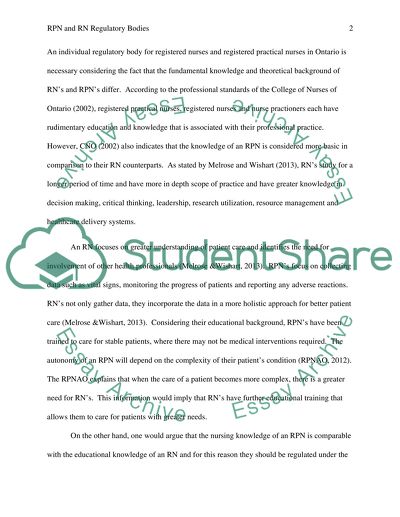Registered nurse and Registered practical nurse should have individual Essay. Retrieved from https://studentshare.org/nursing/1631190-registered-nurse-and-registered-practical-nurse-should-have-individual-regulatory-body
Registered Nurse and Registered Practical Nurse Should Have Individual Essay. https://studentshare.org/nursing/1631190-registered-nurse-and-registered-practical-nurse-should-have-individual-regulatory-body.


